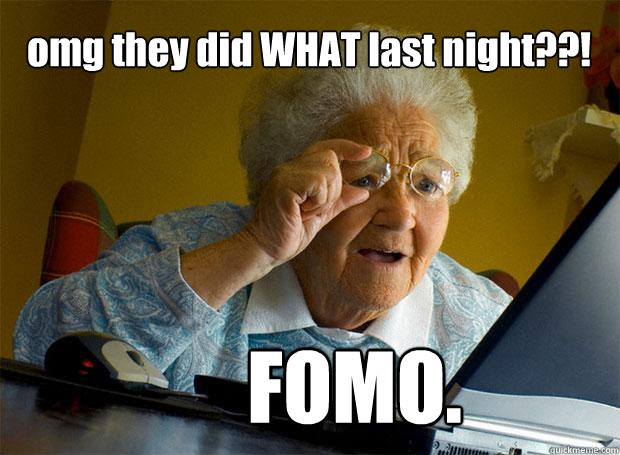Okay, we confess: We want you to experience FOMO. Known colloquially for the “fear of missing out,” FOMO has increased exponentially alongside the growth of connectivity. Seriously, it’s catalyzed a shift in everything from how content is shared to how people eat. It’s also how we get you to read what we post each week.

Marketers use FOMO to spur their customers to action. They also suffer from it. Just as consumers are tempted to try color-changing unicorn frappuccinos, so too are marketers tempted by new communications platforms promising to be the next big thing.
So how can brands beat back FOMO to make smart choices about how to invest their time and resources? Erik Huberman, founder and CEO of Hawke Media, recommends four practices that require data and discipline.
We put his tips to the test when thinking about how to reinvigorate our social channels earlier this year. We previously attempted to manage 10 different platforms. It was too much to balance as a young agency focused on exceeding client expectations and building new business. Some channels hadn’t been updated in months, others featured only periodic, seasonal content.
We had to fight FOMO and determine the best marketing platforms for our investment. But how?
Set Goals And Evaluate Against Them
First, we established goals for our external communications. We prioritized increasing brand awareness, establishing credibility as experience marketing experts, and attracting new business – objectives most brands can agree upon give or take their industry.
Evaluating each marketing channel against these goals allowed us to separate platforms into two types: 1) On-stage and 2) Behind-the-scenes. If they met all of our criteria, we would shine the spotlight on our “on-stage” platforms. We would source and create tailored content, post regularly, focus on their growth and feature them on our website. We wouldn’t deactivate the “behind-the-scenes” platforms, but we wouldn’t showcase them either. Using our goals as a guide, an obvious decision emerged – four channels were shifted into the “behind-the-scenes” category.
Look At The Data
Next, we turned to the numbers. Our social footprint was small, but two platforms boasted audiences far larger than the rest. Knowing that audiences are easier to grow from 100 than from zero, these channels, Facebook and Twitter, earned their places on our “on-stage” list.
Align With Existing Strengths
We examined the benefits of each platform and what skills were needed to make the most of them. As an agency with an augmented staffing model, we outsource photography and graphic design. Sure, we could create content for Instagram and Pinterest, but the strengths of these channels didn’t align with our own. LinkedIn, however, did. We use the professional network for prospecting. And it’s a natural platform to demonstrate thought leadership. A good fit all around.
Takeaway
In the end, we decided to focus our efforts on Facebook, Twitter, LinkedIn and Instagram. And so far, so good. We’ve seen month-over-month growth in both the size of our audience and their engagement with our posts. Perhaps that’s because we share content that induces FOMO? Or perhaps it’s because we did battle with FOMO and won?
Have you applied similar practices to focus your marketing efforts? Maybe you need help reaching audiences more effectively? If so, our team of experts is here to help. Contact us to discuss your needs today.